None of Pál D. Király’s guns achieved monumental fame, but he had a long and successful career as a weapons design engineer and became one of those few gun designers who developed a novel operating system to the degree that his name has become directly associated with it. The idea he came up with was the lever-delayed blowback system, in which a two-part bolt and eccentric lever are used. The initial rearward movement of the bolt (while still under fairly high chamber pressure) is done with the lever pushing against the rear half of the bolt, forcing it to move a certain distance before the front half is free to travel. This prevents the breech from opening before pressure has dropped to a safe level. This system was used in a number of submachine guns including the Hungarian Danuvia 39M and 43M, the Italian FNA-B43, the San Cristobal carbine, the French AA-52 machine gun, and most notably the French FAMAS rifle.
Early in Király’s career he worked as an engineer for SIG in Switzerland, and was involved with the MKMS family of submachine guns, which operated in a fairly similar manner and look very much like Király’s 39M design. The 39M was developed in 1937, and formally adopted by the Hungarian Army in 1939 (hence its designation). It used, of course, Király’s lever-delayed blowback system, and featured a folding magazine well for transport, a 40-round magazine, and three-position fire selector.

The Danuvia 39M (named for the factory where it was manufactured) was not really an outstanding gun in any particular way, but it was a solid, reliable, and well-liked weapons for Hungary during the second world war. The complexity of the lever-delayed system over a typical blowback bolt was justified by the chambering of 9x25mm Mauser Export in the 39M, which was significantly more potent of a cartridge than the other subguns of the day. It fired a 126gr bullet at just under 1500fps, giving it a muzzle energy more than 50% greater than the 9mm Parabellum.
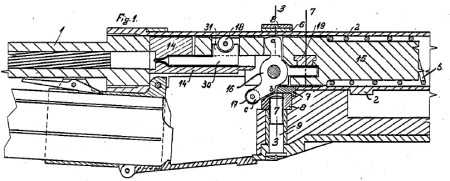
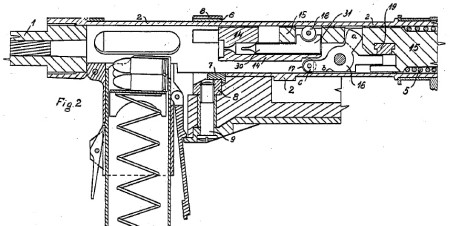
About 8000 of the 39M submachine guns were made for the military, and they were well liked. Reports are that they worked very well even in the cold and mud of the Russian front, and the only complaint was ammunition availability (as they were the only weapons around using 9×25 Mauser ammo).
The magazine was a double-stack, double-feed design, and thus could be loaded effectively without a special tool. When not in use, the magazine and magazine well could pivot forward to be housed inside the stock, with a sliding metal plate to cover the opening and keep the internals free of dirt.
The safety on the 39M was a rotating lever at the rear end of the receiver tube, with positions for safe (Z = Zárva, or “closed”), semiauto (E = Egyenkén, or “one by one”), and full auto (S = Sorozat, or “in-a-row”). Disassembly in the field is very simple – press in the takedown button (see photo below) and rotate the receiver endcap 90 degrees. This allows the endcap to come off, after which the recoil spring and bolt will slide out the back of the receiver.
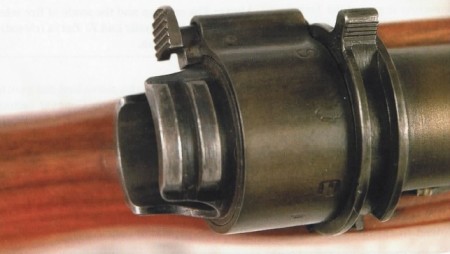
While the 39M was a popular and dependable weapon, it was too large for easy use by specialty troops like armored vehicle crewmen. An experimental folding stocked version was designed with a hinge in the wooden stock, but this proved unsuccessful (a total of 276 were delivered to the Army in 1940). Instead, an underfolding metal stock was designed, and this version was adopted in 1943 as the (predictably) 43M. The 43M had a few other changes (including a different magazine design not compatible with the 39M), and is worthy of its own article.
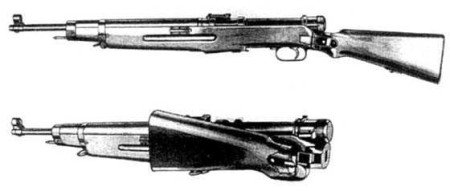
Technical Specs
Mechanism: Király lever-delayed blowback
Caliber: 9x25mm Export Mauser
Bullet weight: 125gr
Muzzle velocity: 1493fps (455 m/s)
Cyclic rate: 750 rpm
Magazine capacity: 40 rounds
Overall length: 41.2in (1046mm)
Barrel length: 19.7in (500mm)
Weight, unloaded: 8.2lb (3.7kg)
Weight, loaded: 9.1lb (4.15kg)
Sights: Ramp and post, graduated from 50 to 600 meters
Comparison to the SIG MKMS Family
The 39M bears a great deal of resemblance to the SIG MKMS family of submachine guns, but there are a couple ways to tell them apart. Specifically, the muzzle, stock finger grooves, rear sight placement, front barrel band (or lack thereof), and rotary safety at the rear of the receiver tube:

Additional Photos
This set of photos was posted to Warrelics.eu, of a 39M purchased by a collector in Europe (missing the front band and magazine):
Patents
US Patent 2,348,790 (P. de Kiraly et al, “Breech Mechanism for Automatic Firearms”, May 16, 1944)


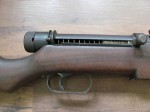
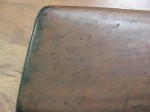
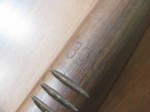
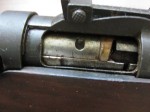
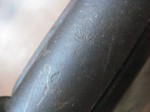
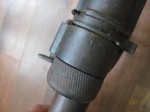
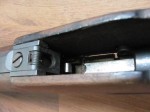

I’ve read that this was one of the weapons tested by the British Army prior to WW2 when the use of “Machine Carbines” as they termed them were being considered. It is perhaps fortunate that they were slow to appreciate the utility of such weapons in that it drove them to design the Sten when things hit the fan. Not the greatest SMG but was cheap & quick to make & effective enough for the task.
Do you know of any business relationship between SIG and Remington? Both the mechanisms of the SIG MKMS and the Danuvia do bear more than a passing resemblance to John Pedersen’s patents for the Remington 51 (one of which shows a lever-delayed version not produced).
I’m rewatting a 43M…..I’ll get some pictures for you.
F
That would be great – thanks!
Hey there! There was one more trick up the sleeve of this weapon: the magazine could be folded up forward into the foreend to make the gun more compact! This is the reason the foreend is so blocky compared to MKMS. If you look at the patent drawing with the closed bolt you can see the magazine is in a folded position. Also if you look at the first pic of the gun you can see the hollow part of the foreend where the mag fits in (but you have to know what you are looking for).
Awesome site BTW! Greetings from Hungary!
Hi Hungary! Do you know where I could find a magazine for the 39 or 43? Thanks
Hi Randy,
Did you find your magazine? Is your gun a 39M or a 43 M? The magazines are not interchangeable as far as I know.
I know someone in Europe that might have one for the 43M. 9045040212
Hi William, Not sure if answer went through, so will reply again. Mag’s ae scarce, also need a safety ring, the button broke of the sample a friend owns.
Need mag for the M43 folding stock version. Either 20 or 40 round and carrying pouch if available – thanks.
Please call 904 5040212
Need mag for the M43 folding stock version. Either 20 or 40 round and carrying pouch if available – thanks.
Whoops! Just realized this info is already given in the description. Gotta read more carefully. Sorry!
The only hands-on, detailed review of the M39 I’ve ever seen rated it a good-shooting weapon, readily controllable in autofire. Also, the authors remarked on the high quality of the Hungarian-made 9x25mm ammo; it gave exceptionally consistent velocities when clocked — and it was wartime stuff! Many years later, I read that the Király system is fairly picky about the pressure-curve of the ammo fed to it, so I guess the Hungarians had no choice but to bear down on the quality control.
Due to the Versaille trety Hungary was forbidden to make automatic weapons. One of the main reasons for the folding magazine was to hide it’s machine pistol origin, as there also is a very special “bayonet” for at lest the 39M if you attach this and fold in the magazine it looks like a common rifle from afar.